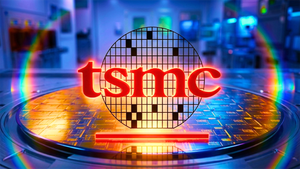Horizon Therapeutics plc (Nasdaq: HZNP) today announced that it has completed enrollment of its Phase 3 clinical trial (OPTIC-J) in Japan evaluating TEPEZZA for the treatment of active Thyroid Eye Disease (TED).
TED is a serious, progressive and potentially vision-threatening rare autoimmune disease that can cause proptosis (eye bulging), diplopia (double vision), eye pain, redness and swelling.1 TEPEZZA was approved by the U.S. Food and Drug Administration (FDA) in January 2020 as the first and only medicine for TED. TEPEZZA has not been approved for commercial use in Japan. There are no other medicines approved for the treatment of active TED in Japan.
“Completing enrollment of this trial is an important step in our efforts to address the unmet need of people living with Thyroid Eye Disease in Japan,” said Yuji Hiromatsu, M.D., emeritus professor, Kurume University Medical Center and co-coordinating trial investigator. “The burden of Thyroid Eye Disease is heavy – daily tasks and activities can be impacted for many, and some withdraw from family and friends due to not looking or feeling like themselves. With this trial, we hope to explore the role that TEPEZZA could have for Japanese patients struggling with active Thyroid Eye Disease.”
The OPTIC-J trial is a randomized, double-masked, placebo-controlled, parallel-group, multicenter study evaluating the efficacy, tolerability and safety of TEPEZZA in the treatment of patients with moderate-to-severe active TED in Japan. The trial methodology is based on the OPTIC Phase 3 trial conducted in the United States and Europe. Adult participants who met the eligibility criteria were randomized in a 1:1 ratio to receive TEPEZZA or placebo once every three weeks for a total of eight infusions (10 mg/kg for the first infusion and 20 mg/kg for the remaining seven infusions).
The primary efficacy endpoint is proptosis response rate at Week 24, measured by the percentage of participants with at least a 2 mm reduction in proptosis from baseline in the study eye, without deterioration in the fellow eye (≥ 2 mm increase). Study participants who complete the treatment period and are proptosis non-responders at Week 24 may choose to enter an open-label extension period to receive an additional eight infusions of TEPEZZA.
“We are so grateful for the participation and partnership of those living with Thyroid Eye Disease in Japan and our principal investigators,” said Elizabeth H.Z. Thompson, Ph.D., executive vice president, research and development, Horizon. “The need for a non-surgical, non-steroidal treatment option for Thyroid Eye Disease in Japan is significant. We look forward to continuing to work with local researchers and regulators to possibly bring relief and hope to Thyroid Eye Disease patients in the region.”
The trial was designed in consultation with Japan’s Pharmaceuticals and Medical Devices Agency (PMDA). More information about the trial, including eligibility criteria, is available on the Japan Registry of Clinical Trials website (trial ID number jRCT2031210453).
About Thyroid Eye Disease (TED)
TED is a serious, progressive and potentially vision-threatening rare autoimmune disease.1 It often occurs in people living with Graves’ disease, but is a distinct disease that is caused by autoantibodies activating an insulin-like growth factor-1 receptor (IGF-1R)-mediated signaling complex on cells within the retro-orbital space.2,3 This leads to a cascade of negative effects, which may cause long-term, irreversible damage, including blindness.4,5 Early signs and symptoms of TED may include dry eyes and grittiness; redness, swelling and excessive tearing; eyelid retraction; proptosis; pressure and/or pain behind the eyes; and diplopia.
About TEPEZZA
INDICATION
TEPEZZA is indicated for the treatment of Thyroid Eye Disease.
IMPORTANT SAFETY INFORMATION
Warnings and Precautions
Infusion Reactions: TEPEZZA may cause infusion reactions. Infusion reactions have been reported in approximately 4% of patients treated with TEPEZZA. Reported infusion reactions have usually been mild or moderate in severity. Signs and symptoms may include transient increases in blood pressure, feeling hot, tachycardia, dyspnea, headache and muscular pain. Infusion reactions may occur during an infusion or within 1.5 hours after an infusion. In patients who experience an infusion reaction, consideration should be given to premedicating with an antihistamine, antipyretic, or corticosteroid and/or administering all subsequent infusions at a slower infusion rate.
Preexisting Inflammatory Bowel Disease: TEPEZZA may cause an exacerbation of preexisting inflammatory bowel disease (IBD). Monitor patients with IBD for flare of disease. If IBD exacerbation is suspected, consider discontinuation of TEPEZZA.
Hyperglycemia: Increased blood glucose or hyperglycemia may occur in patients treated with TEPEZZA. In clinical trials, 10% of patients (two-thirds of whom had preexisting diabetes or impaired glucose tolerance) experienced hyperglycemia. Hyperglycemic events should be managed with medications for glycemic control, if necessary. Monitor patients for elevated blood glucose and symptoms of hyperglycemia while on treatment with TEPEZZA. Patients with preexisting diabetes should be under appropriate glycemic control before receiving TEPEZZA.
Adverse Reactions
The most common adverse reactions (incidence ≥5% and greater than placebo) are muscle spasm, nausea, alopecia, diarrhea, fatigue, hyperglycemia, hearing impairment, dysgeusia, headache, dry skin, and menstrual disorders.
Please see Full Prescribing Information or visit TEPEZZAhcp.com for more information.
About Horizon
Horizon is a global biotechnology company focused on the discovery, development and commercialization of medicines that address critical needs for people impacted by rare, autoimmune and severe inflammatory diseases. Our pipeline is purposeful: We apply scientific expertise and courage to bring clinically meaningful therapies to patients. We believe science and compassion must work together to transform lives. For more information on how we go to incredible lengths to impact lives, visit www.horizontherapeutics.com and follow us on Twitter, LinkedIn, Instagram and Facebook.
Forward-Looking Statements
This press release contains forward-looking statements, including, but not limited to, statements related to the potential benefits of TEPEZZA; the potential approval and commercial availability of TEPEZZA in Japan; the design of clinical trials and other statements that are not historical facts. These forward-looking statements are based on Horizon’s current expectations and inherently involve significant risks and uncertainties. Actual results and the timing of events could differ materially from those anticipated in such forward-looking statements as a result of these risks and uncertainties, which include, without limitation, risks related to clinical trials, including the fact that prior results may not predict future clinical trial outcomes; risks related to regulatory approvals; impacts of the COVID-19 pandemic and actions taken to slow its spread, including potential delays in clinical trials; regulatory obligations and oversight, including any changes in the legal and regulatory environment in which Horizon operates and those risks detailed from time-to-time under the caption “Risk Factors” and elsewhere in Horizon’s filings and reports with the SEC. Horizon undertakes no duty or obligation to update any forward-looking statements contained in this press release as a result of new information.
References
- Barrio-Barrio J, et al. Graves' Ophthalmopathy: VISA versus EUGOGO Classification, Assessment, and Management. Journal of Ophthalmopathy. 2015;2015:249125.
- Weightman DR, et al. Autoantibodies to IGF-1 Binding Sites in Thyroid Associated Ophthalmopathy. Autoimmunity. 1993;16(4):251–257.
- Pritchard J, et al. Immunoglobulin Activation of T Cell Chemoattractant Expression in Fibroblasts from Patients with Graves’ Disease Is Mediated Through the Insulin-Like Growth Factor 1 Receptor Pathway. J Immunol. 2003;170:6348-6354.
- McKeag D, et al. Clinical features of dysthyroid optic neuropathy: a European Group on Graves' Orbitopathy (EUGOGO ) survey. Br J Ophthalmol. 2007;91:455-458.
- Bartalena L, Kahaly GJ, Baldeschi L, et al. The 2021 European Group on Graves’ Orbitopathy (EUGOGO) Clinical Practice Guidelines for the Medical Management of Graves’ Orbitopathy [published online ahead of print]. Eur J Endocrinol. 2021 Jul 1:EJE-21-0479.R1. doi: 10.1530/EJE-21-0479.
View source version on businesswire.com: https://www.businesswire.com/news/home/20221116005151/en/
Contacts
Investor Relations:
Tina Ventura
Senior Vice President, Chief Investor Relations Officer
investor-relations@horizontherapeutics.com
Erin Linnihan
Executive Director, Investor Relations
investor-relations@horizontherapeutics.com
U.S. Media:
Rachel Vann
Senior Director, Product Communications
media@horizontherapeutics.com
Maggie Fairchild
Associate Director, Product Communications
media@horizontherapeutics.com
Ireland Media:
Gordon MRM
Ray Gordon
ray@gordonmrm.ie





